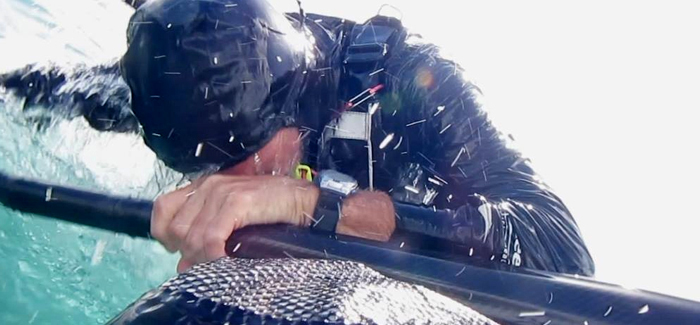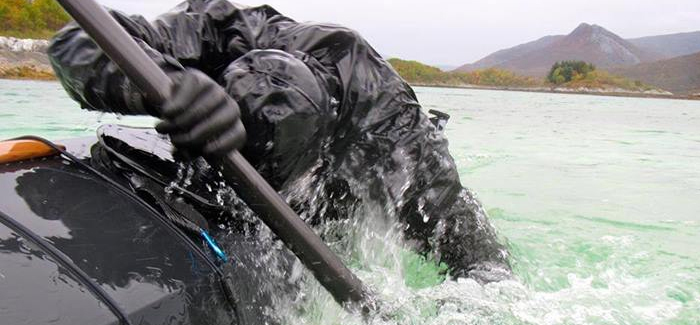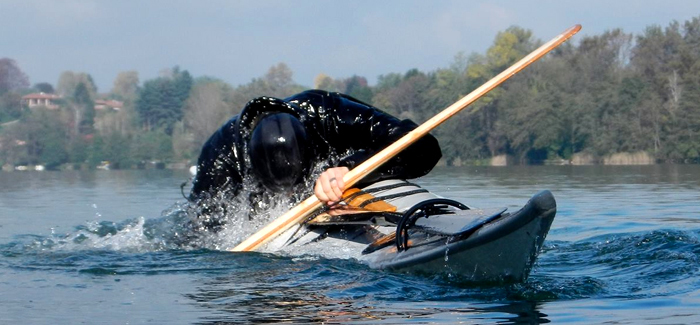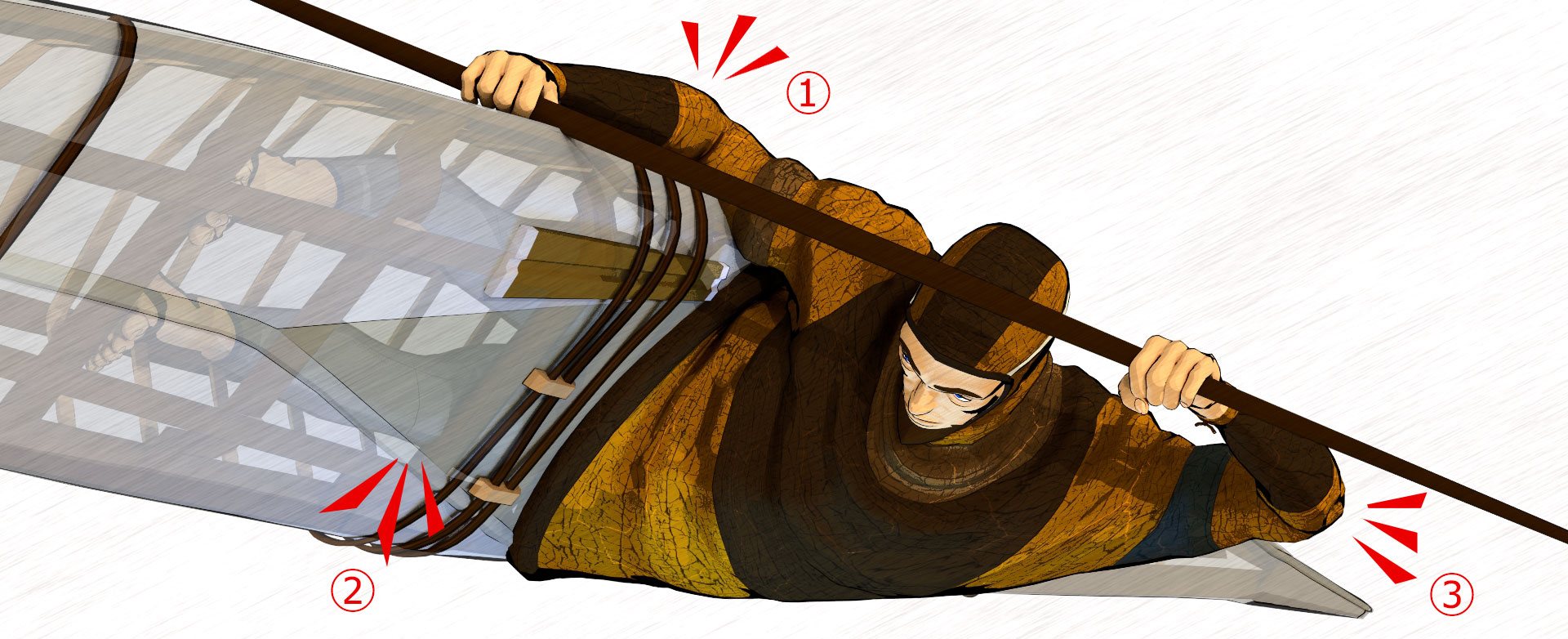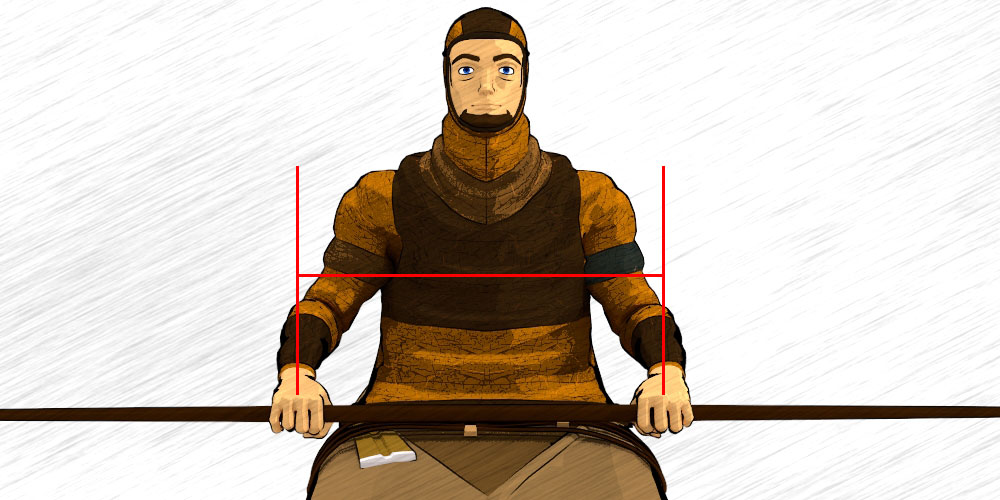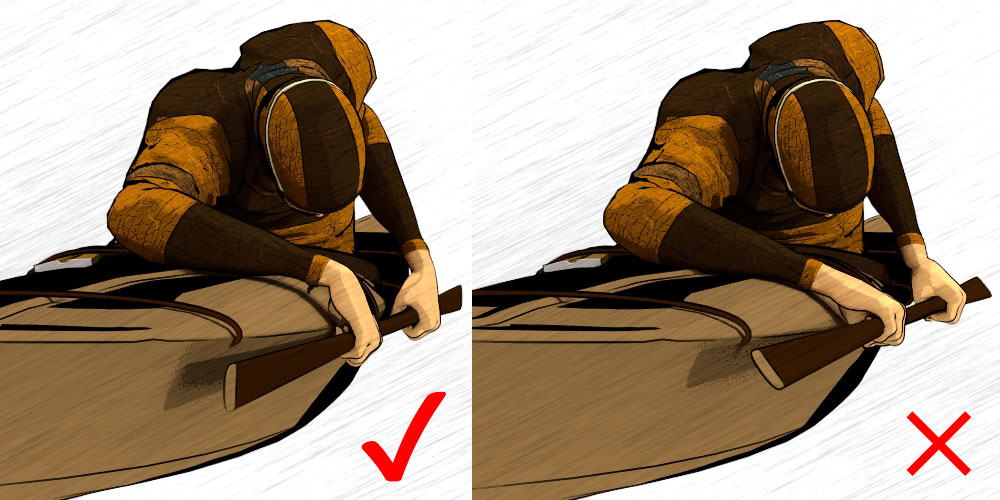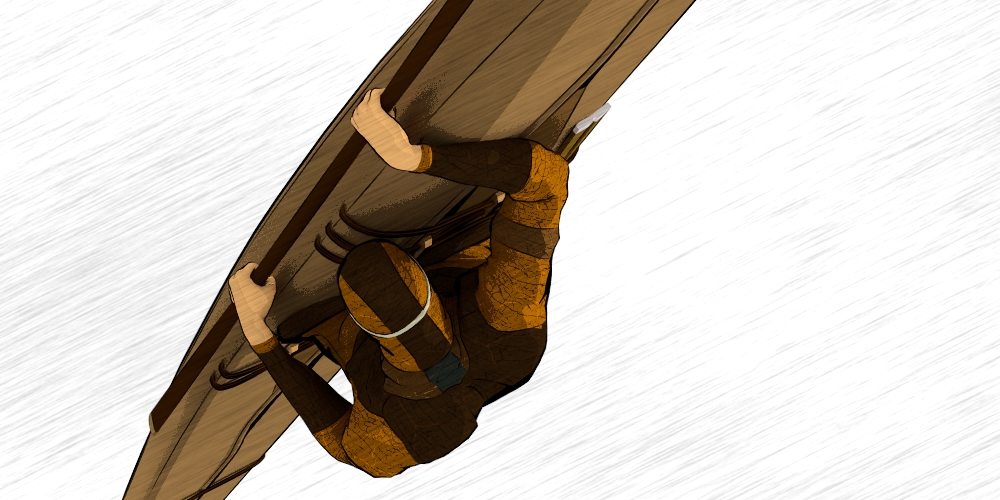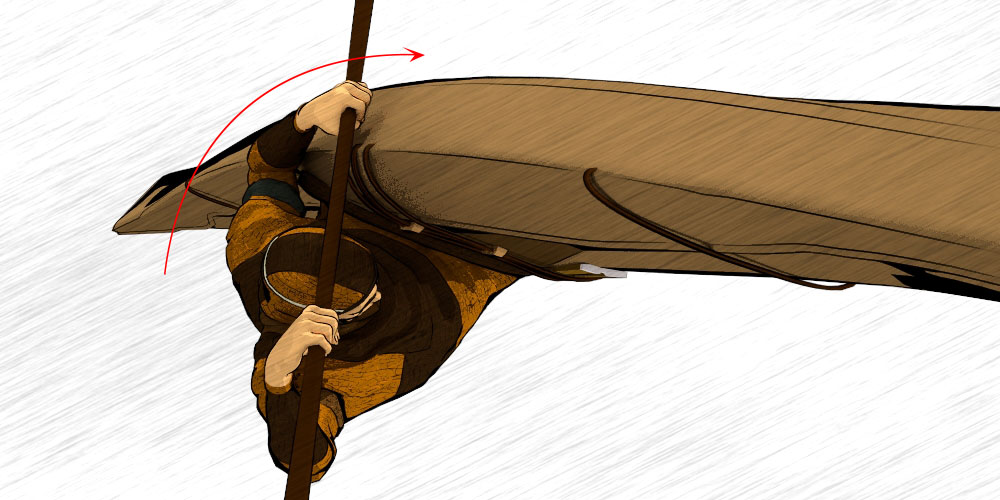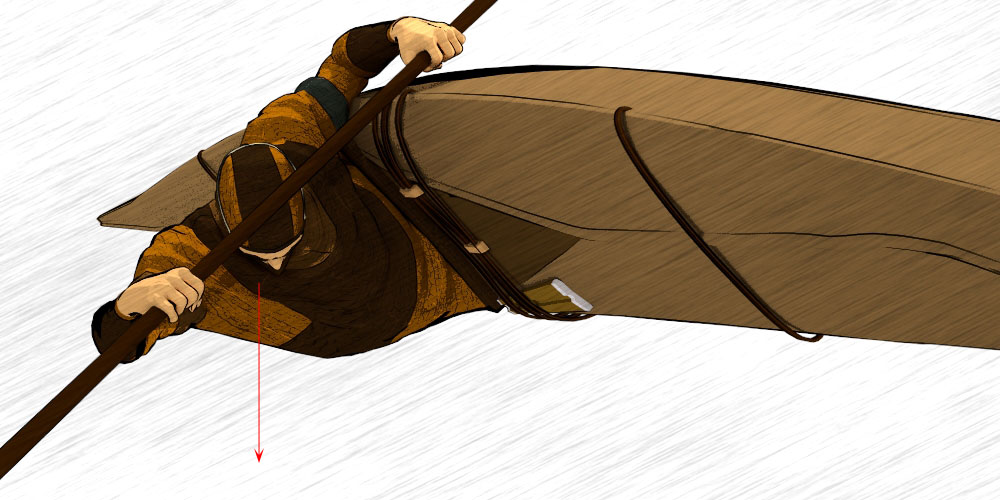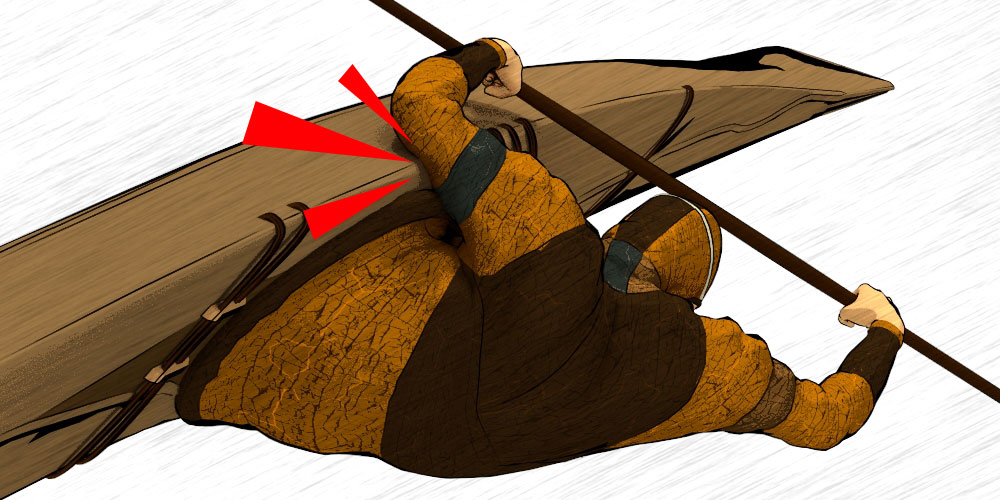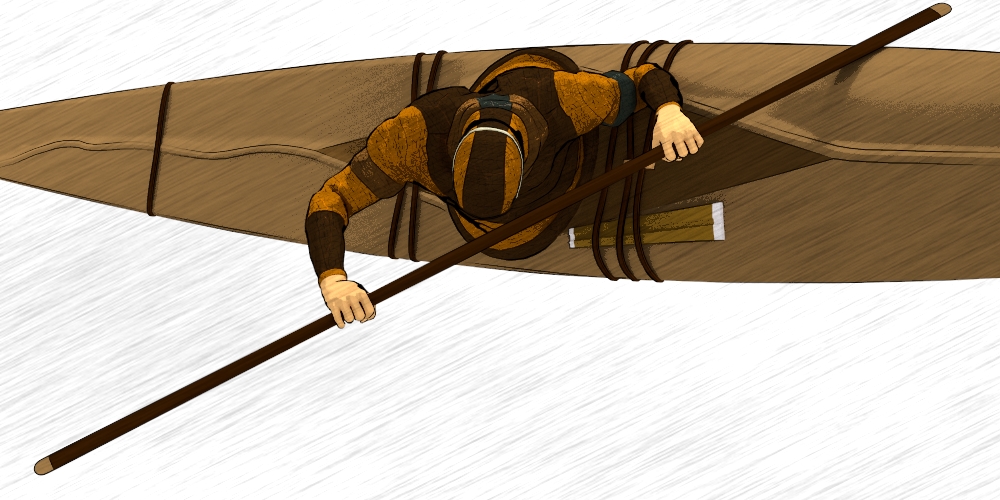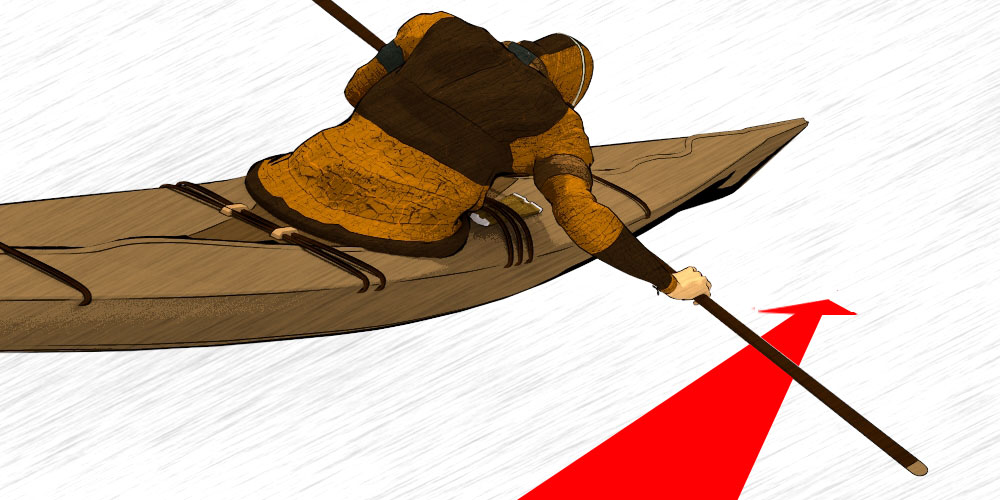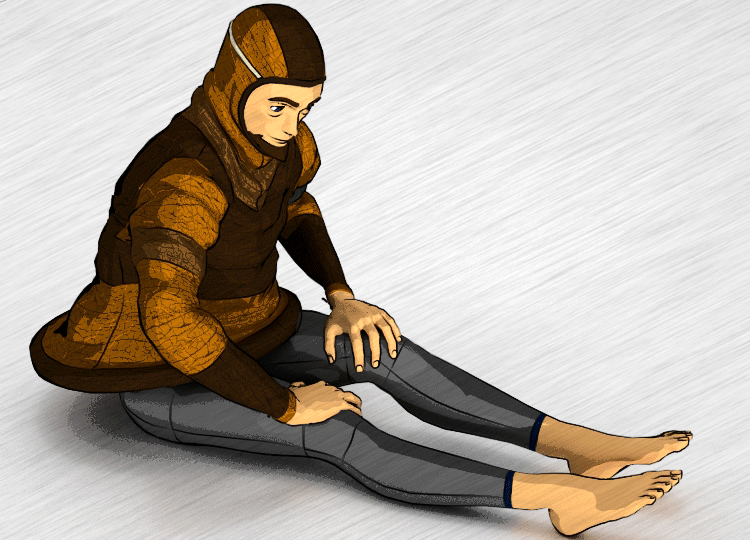Storm Roll
STORM ROLL is the star of this website. And just so you know, that's my favorite roll. Anyway, I recommend you to learn STORM ROLL. It is not just a hard sell. I have a reason to recommend it to you. For example, please imagine a Greenland Standard roll. You capsized during paddling and recovered with a standard roll. Where is your upper body at the finish? Yes, it is on the stern deck. You must upright your upper body and to paddle again. Here is a risk lurking. You must not forget "sea conditions". You have just capsized. The moment you lift your upper body, your center of gravity will rise and you will lose balance again. And now that you've recovered with a standard roll, you need to change its grip position for paddling. How long does it take to switch from recovery to paddling? You may be quite busy until you paddle again. And it may at the same time lead to confusion of thinking. STORM ROLL can avoid all of these risks. The finish is leaning forward and the grip is in the combat position. You can start paddling immediately after recovery. And, after all, the beauty of a storm roll is by far the best. Umm...now, is there a reason you don't have to master STORM ROLL?
How to practice
I think there are many ways to practice. STORM ON recommends a three-step exercise like this video.
【Step1】
Step 1 is an application of Low Brace. Stand the paddle beside your upper body. Then, make sure that the paddle contacts the kayak (seam line). Let's just overturn half. Use the leverage principle to recover with brace and kick.
【Step2】
Float the paddle beside the kayak. There is no problem even if the tip is riding a little kayak. One rotation with the paddle floating. Watch the paddle and catch. Use brace and kick to recover.
【Step1】
Step 1 is an application of Low Brace. Stand the paddle beside your upper body. Then, make sure that the paddle contacts the kayak (seam line). Let's just overturn half. Use the leverage principle to recover with brace and kick.
【Step2】
Float the paddle beside the kayak. There is no problem even if the tip is riding a little kayak. One rotation with the paddle floating. Watch the paddle and catch. Use brace and kick to recover.
【Step3】
Make a full rotation with the paddle. Rotate the paddle 90 degrees relative to the kayak while sinking. At this stage, the conditions are the same as those in "Step 2." After that, please recover with brace and kick. If you can do this, it's almost a storm roll. If the kick and brace help you recover, use sweep instead of brace.
Make a full rotation with the paddle. Rotate the paddle 90 degrees relative to the kayak while sinking. At this stage, the conditions are the same as those in "Step 2." After that, please recover with brace and kick. If you can do this, it's almost a storm roll. If the kick and brace help you recover, use sweep instead of brace.
Key points
This pose becomes a milestone. This is a kind of "second set pose".
➀:Hold a kayak under your armpit. By doing this, you can keep your upper body (head) near the sea surface. The rule of the roll is to raise the head last, but in fact it should be kept near the sea surface just before raising.
➁:It's a kick. Always put pressure on your knee brace or deck, not just momentary movements. Apply maximum pressure when sweeping (or pushing down) the paddle. Be aware of the feeling of lifting your knees to your chest. Being able to use both legs is even more effective. Called "Load and Drive". See the video below for details.
➂:As with any sweep, pull your elbow directly behind. Be careful not to move your elbow down. For other points, I commented on the images below. Please click to see each.
➀:Hold a kayak under your armpit. By doing this, you can keep your upper body (head) near the sea surface. The rule of the roll is to raise the head last, but in fact it should be kept near the sea surface just before raising.
➁:It's a kick. Always put pressure on your knee brace or deck, not just momentary movements. Apply maximum pressure when sweeping (or pushing down) the paddle. Be aware of the feeling of lifting your knees to your chest. Being able to use both legs is even more effective. Called "Load and Drive". See the video below for details.
➂:As with any sweep, pull your elbow directly behind. Be careful not to move your elbow down. For other points, I commented on the images below. Please click to see each.
Legs
The action of kicking up the deck is quite easy to understand, and I think that is no problem in actual rolls. The tricky part is the opposite of kicking. In other words, the action of holding down the bottom behind the knees. However, once you can use it, it can be applied to various rolls as well as STORM ROLL. You can see how well you have relied on paddles. It's a good idea to sit on the floor and practice iteratively while watching TV. If you practice only when you go to the sea, your body will not remember it. That said, after all, your knees won't bend in reverse unless you're a bird. What is it for? I interpret this as a move to make the kick more powerful. Compare kicking with just one leg and moving with both legs. You can see that the “both legs” can release a heavier and faster kick.
Greenland Rolls
You can check out Greenland Rolls other than Storm Rolls on the QajaqUSA site. If you want animation for these rolls, please ask me. I translated the page and posted it in the Japanese version.
Still Editing





